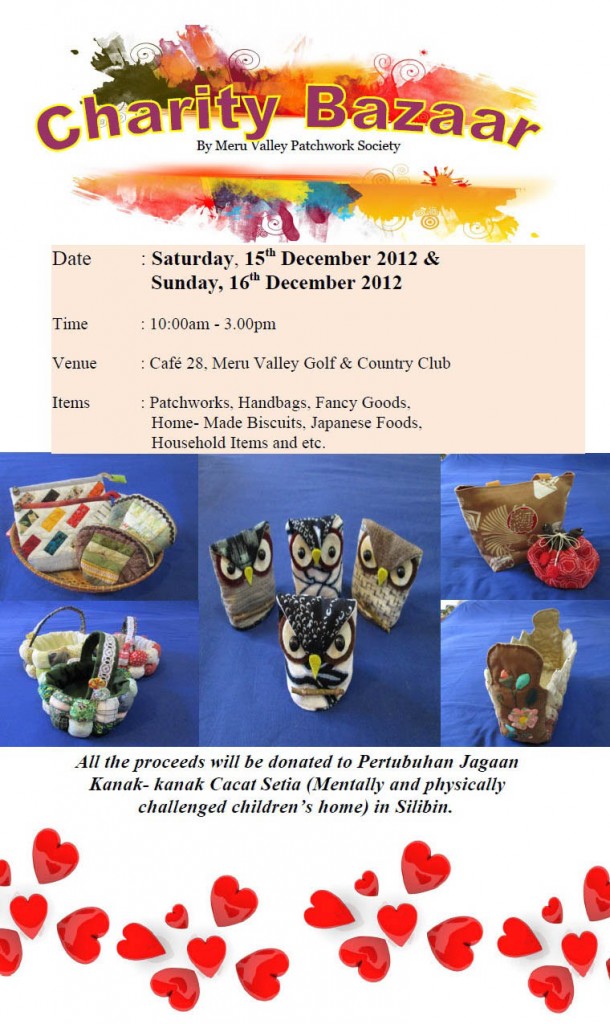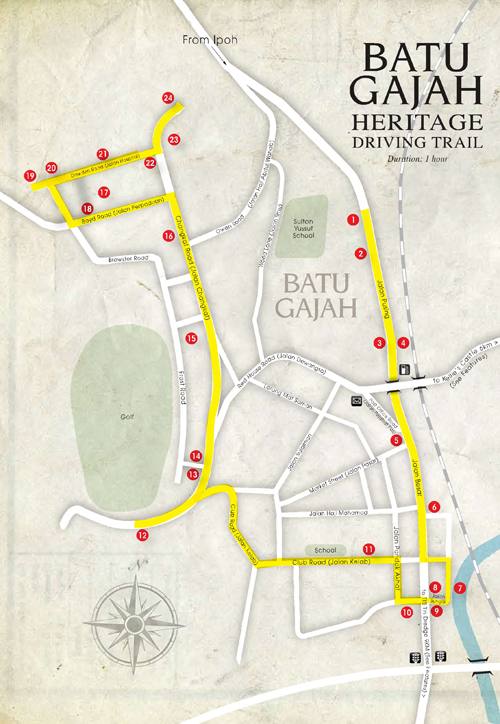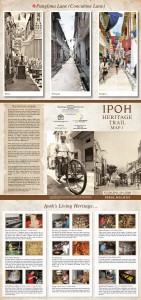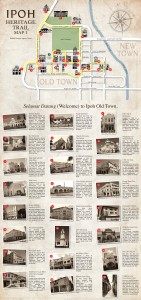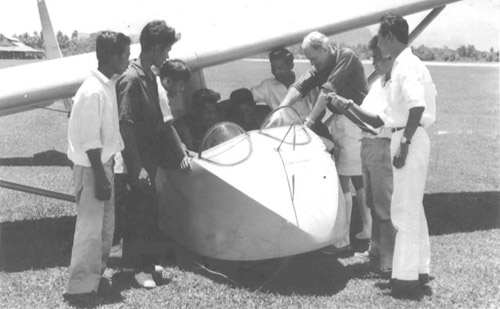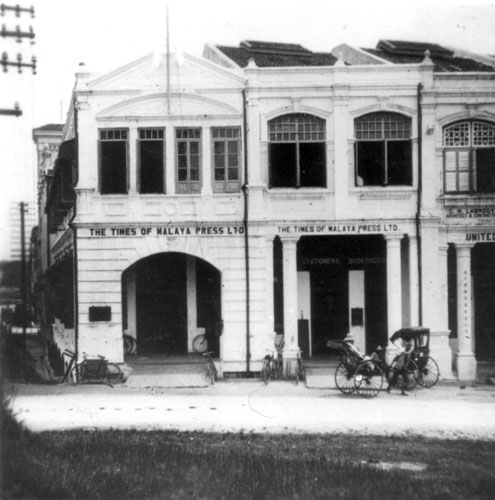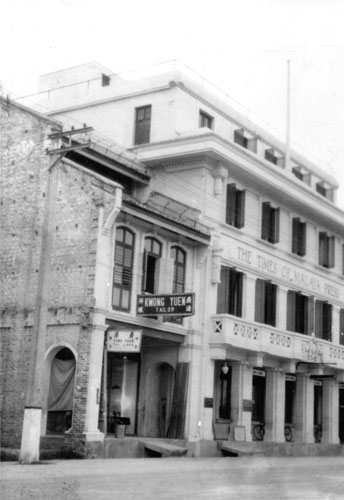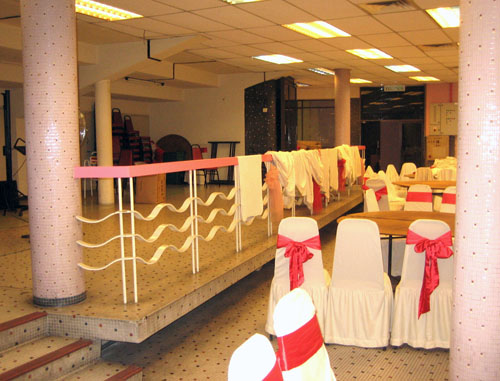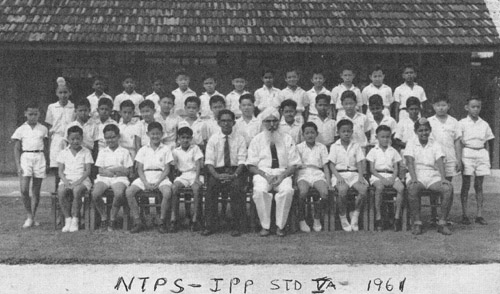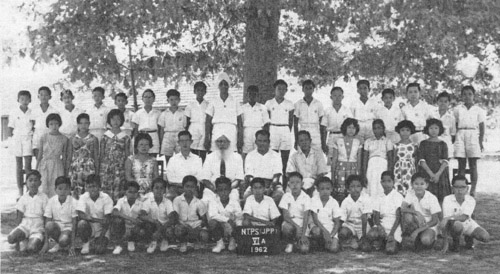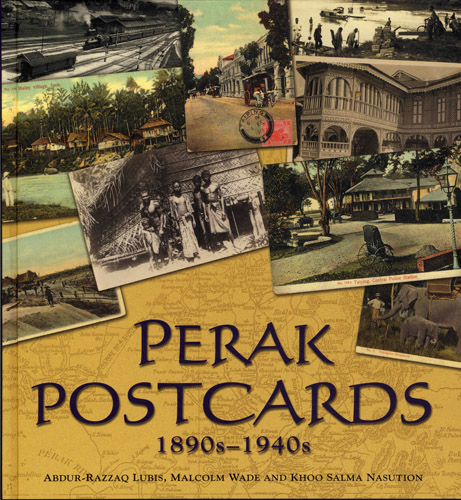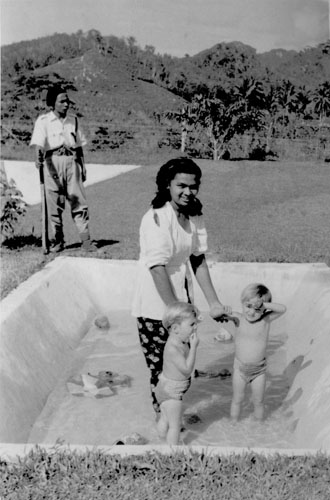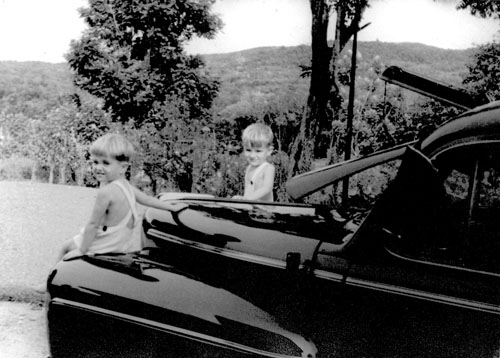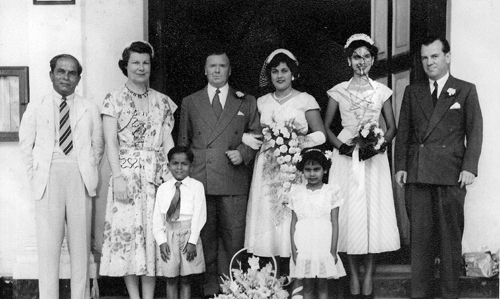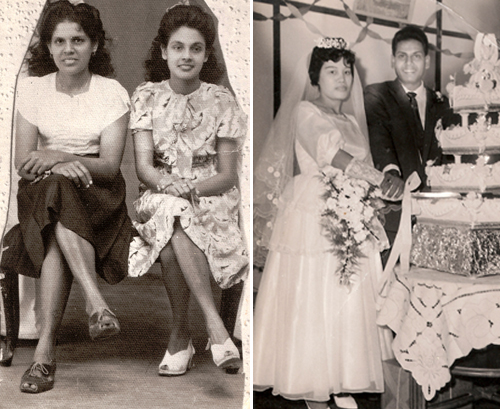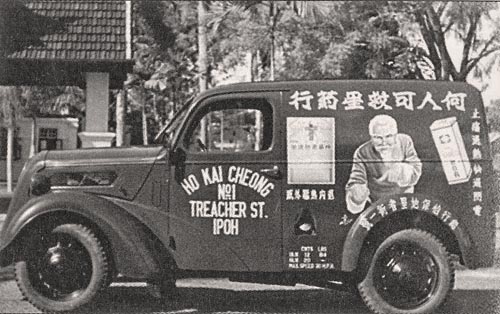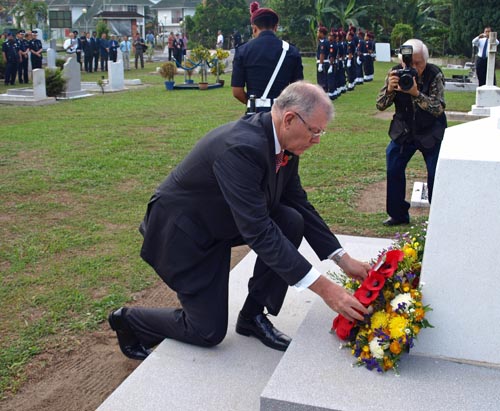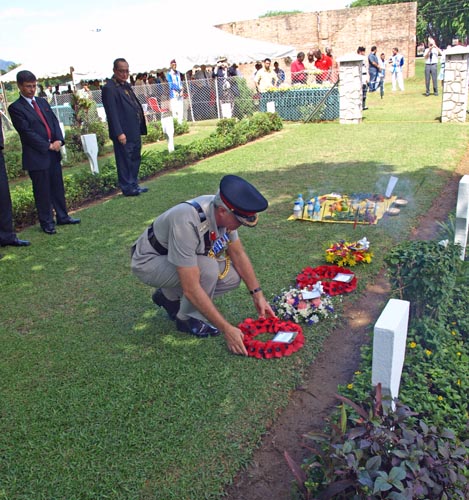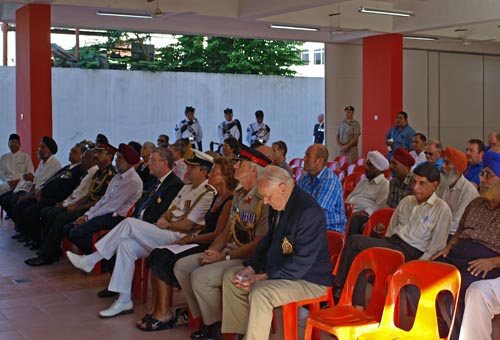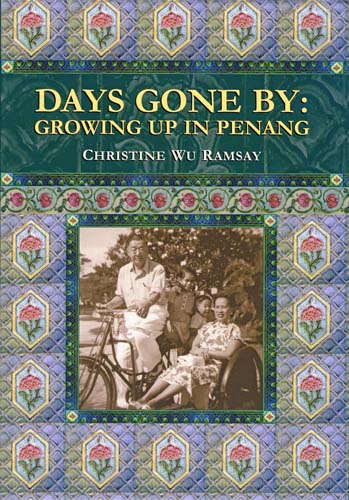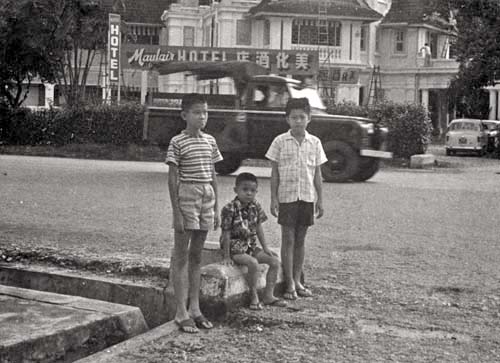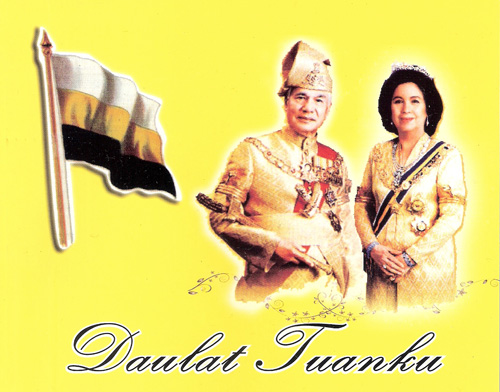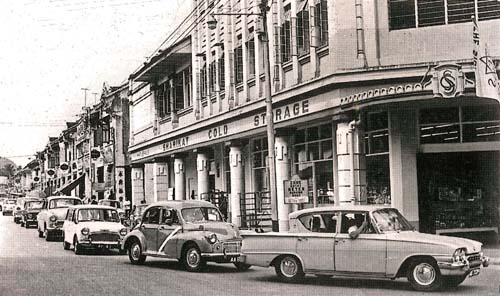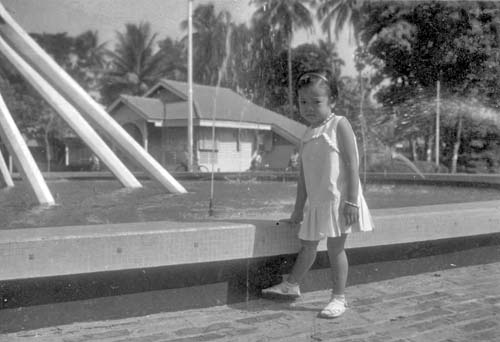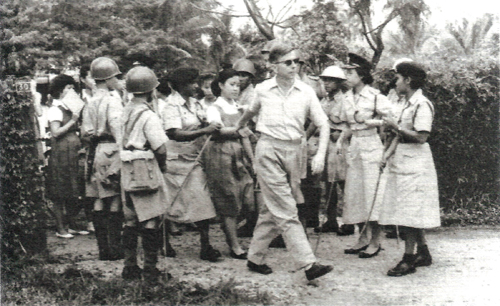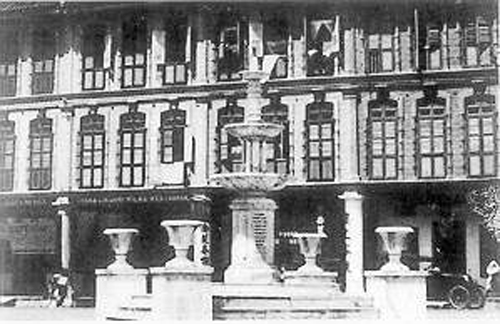December 2012
July 2011
New Map – Batu Gajah Heritage Driving Trail
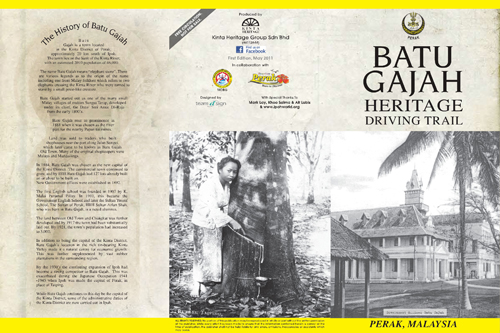
Recently published, this new heritage map comes from the same stable as the two Ipoh Heritage walking trails. It is available now, FREE, from the Ipoh Tourism Office and leading hotels and tourism outlets. Alternatively contact kintaheritage@gmail.com.
Unfortunately we do not have enough space to put up the whole thing, but the map below will give you the idea of the scope of this trail.
Included are photographs and descriptions of the different heritage sites (or in some cases what is left of them), and a brief history of both Kellie’s Castle and TT5 Tin Dredge.
Do go and get your copy today as they are going to be popular!
May 2011
A Solution to Meet a Need
Looking to improve your speaking and leadership skills? Ignite your career? Win that job interview?
Since 1924, more than 4 million people around the world have become more confident speakers and leaders because of their participation in Toastmasters.Toastmasters International is a world leader in communication and leadership development. Today, their membership is 260,000 strong. These members improve their speaking and leadership skills by attending one of the 12,500-plus clubs that make up their global network of meeting locations.
Ipoh has two very active Toastmasters Clubs and membership offers solutions to improve your personal skills.
As a special initiative the clubs are running a new awareness campaign with a target audience of students, age 18 – 25 who study at Institutes of Higher Learning.
If you are interested in taking advantage of this campaign please log on to the above websites, or contact:
C G Huan 012 558 1012, hcgiap@gmail.com (YMCA venue)
or Guna 012 516 2002, karmun0901@hotmail.com (Jln Chung Thye Phin venue).
January 2011
Heritage Trail Map (1st Map)
Here’s a copy of the 1st Heritage Trail Map. This trail covers Old Town and is held every Saturday morning at 8am, starting at the Ipoh Railway Station.
A full size printable copy of this map is now available on our database athttp://db.ipohworld.org/view/id/3875 in PDF format.
December 2010
“Come Fly with Me!”
This was sent to us by Robin Tan. According to Robin, Mr Radcliffe (in white shorts) used to take him sailing when they were not gliding.
Yes! Gliding – as the Kinta Valley was a suitable place, since it was blessed with many hills. Even the climate gave the much needed thermal boost for gliding. Plus, the Ipoh Airport wasn’t so busy then. This was back in the late 50s and early 60s.
Sadly gliding activities in Ipoh slowly died off as the years went by. For those (like me) who have never had the experience, Robin describes it as “…peaceful, serene and quiet way of flying without vibration and noise…” and that “…the only sound you hear is the whistleling of the wind over the wings..”.
Ahh, what bliss! 🙂
November 2010
The Times of Malaya – The 1st and 2nd Building
This is the first Times of Malaya building, which was along Post Office Road. The first issue of Ipoh’s first newspaper was published on 9th March 1904. 2 years later, the newspaper was taken over by J A S Jennings – who remained the paper’s most influential editor for a good 30 years!
In the early 1930s, the Times of Malaya moved to a new building, along Brewster Road (see picture below).
After the war (after 1945), this building was used by the Public Works and the Department of Drainage and Irrigation. What’s become of it now? Can anyone fill us in on the latest?
We thank Nicholas Jennings – the grandson of J A S Jennings – who sent us a copy of these rare pictures.
What’s Happened to Lido?
This picture was sent to us by Ruth Rollit, the daughter of the Danish architect B M Iversen.
Familiar? No? This is what the interior of the Lido Cinema looks like today – as you can see, it’s not longer a cinema. Lido has now been converted into Florex Restaurant.
In this picture, the raised level shown was where the bar used to be. Has much of the interior changed? I noticed that the original floor tiles are still there. What about the rest of the place?
Early 1960s – at NTPS Jalan Pasir Puteh
Here we have Std 5A, from the year 1961.
And here is Std 6A, from 1962.
We were told that among those from this school include our very own Lat! Yes, who would have thought that one day…..someone from your alma mater would end up a famous cartoonist? Is he in one of these pictures? Are YOU in one of these pictures? Who was your favourite teacher back then? Come on people, it’s time for a reunion! 🙂
A special thanks to one of our followers, SK, for letting us use these pictures for the blog.
October 2010
Perak Postcards 1890-1940
Once the premier state of the Federated Malay States, Perak pioneered tin mining, rubber, roads and railways in Malaya. In the early twentieth century, Europeans and Asians venturing into this frontier country bought picture postcards to send home to family, friends and pen pals all over the world. Perak Postcards 1890s-1940s represents the largest such collection ever assembled into one volume, with more than 500 picture postcards contributed by several collectors. Practically all the major Perak districts and towns are featured – Ipoh, Taiping, Kuala Kangsar, Telok Anson and the mining towns of Kinta.
Malcolm Wade, a stalwart of the Malaya Study Guide, has written an authoritative postal history of Perak. Abdur-Razzaq Lubis and Khoo Salma Nasution, authors of the critically acclaimed Kinta Valley, Pioneering Malaysia’s Modern Development (2005) have extensively captioned the images – using contemporary sources, travelogues and memoirs to illustrate these vivid windows to the past.
This book is published by Areca Books; ISBN 978-967-5719-01-1.
The book is priced at RM 120, includes 575 postcards plus a few stationery and real photos.
For more information, do visit www.arecabooks.com or write to arecabooks.gmail.com
September 2010
It’s Those Twins Again ……
Yes it is John De Lucy and his twin brother having fun in their garden pool under the supervision of their Amah, but of course this was during the Malayan Emergency and so the ever-present armed guard is also in the picture. As John himself relates in our earlier blog, eventually they had to leave Malaya (in 1952) as the Communist attacks became too strong to ensure these youngsters safety.
This second picture again shows the twins happily posing for their photograph, but in this case the ominous feature is the armoured Ford V8 car that they are sitting on at the entrance to the estate.
Now for our younger readers who enjoy the security and good living in today’s Malaysia I would ask you to consider how different your life would be if the communist threat had been allowed to have its way and turn us into a communist satellite of China, back in the 1950’s. Should you not be too aware of what happened in those times then I would suggest you click here to find out a little more about the Malayan Emergency and those that saved our country from the Communist threat.
For those who wish to know more of the detail of the Emergency thre are over 300 historical entries, the majority with photographs, that may be accessed from our database here. Many of these have come from those who fought in the jungle for the future of our country as a democratic entity.
We thank John De Lucy for sharing these photos with us.
Ipoh-Born Joan Marjorie Joseph ……
We received the following email and a number of family photographs recently from a lady named Judy and, as we usually do, would very much like to help with this enquiry which reads:
“I am researching my family history and trying find out as much as possible – of whatever type, good and bad – about my mother’s family. She was born Joan Marjorie Joseph(e) in 1930, in Ipoh, one of 13 children to a family of, I believe, tin miners. Amongst her siblings were Clarence, Clive, Kenny, and Patricia. In 1957 she married James Gardner, a rubber planter who had managed plantations in Ipoh and later at Rasa. the family may have, let us say an ‘interesting and colourful’ history and would be most interested – as I said, good or bad – to learn whatever I can.”The above photo is described by Judy as:
“The Gardner-Joseph wedding photo is, of course, my parents wedding.
You’ll see that my Aunty Pat has been scratched out – my mother’s doing, I’m afraid! I would be particularly interested in identifying the other people shown and where it took place.”
These additional photographs feature Vivian and Joan Joseph (left) and the wedding of brother Kenny to a lady named Helen.
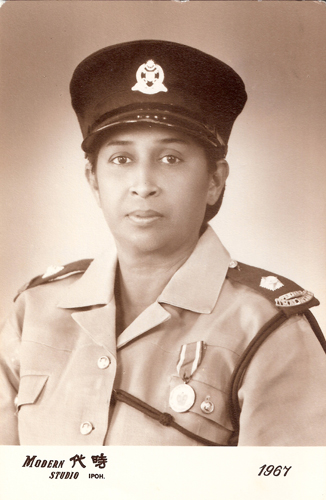 Finally we have a single photo of “Auntie Girlie” as an officer in the Malaysian prison service, in Ipoh in 1967. Her badge of rank is one pip on her shoulder. Recognise her? If so please let us know.
Finally we have a single photo of “Auntie Girlie” as an officer in the Malaysian prison service, in Ipoh in 1967. Her badge of rank is one pip on her shoulder. Recognise her? If so please let us know.
All together we have 9 old photographs of this family and if anyone believes they know anything about them we shall be happy to email more to help with identification. We look forward to your help.
July 2010
One journey has ended. Another is about to begin…… 今世毕. 来世始…..(Final Part)
All the last rites performed for the dead in the funeral parlors along Hume Street were a fusion of Taoism, Confucianism and Buddhism beliefs.
The core belief is that death is universal. When a person dies, the soul will leave its body. But it will not realize immediately that death has occurred upon itself. This detached soul will hover above the body, become very distress to find itself in a new dimension. It will take a week for the deceased to finally realize its departure. And it took about 49 days for the next rebirth to occur.
Therefore, it is paramount to offer guidance in the form of prayers to comfort this disorientated soul and steer it to the path of another rebirth. Hence, a wake will be conducted to chant prayers to pacify the soul and lead it to a safe realm.
After the family had purchased all the necessities, an undertaker washed the corpse with scented water and dusted it with talcum powder. It was then dressed in the silk longevity suit and for a female, “make up” will be applied to its face. All these tasks were done on a hay mat. Once complete, the deceased will be placed into the coffin, with feet facing out towards the door. The coffin will be put on a stand about a feet from the ground.
A small piece of ancient coin is placed between the lips. The face will be covered with a small piece of yellow silk cloth. Another bigger piece of blue silk cloth printed with mantras or Buddhist scriptures will be used to cover the corpse. A paper umbrella is opened up and placed on the coffin. To prevent the body from decaying, dried ice will be pumped into the coffin.
An altar will be set up at the foot of the deceased. Foods were placed in front of the deceased’s large portrait. A large urn to hold joss sticks will be placed in the middle. A pair of big white candles will be placed on either side. The pair of male and female servants made from papers were placed on either side of the coffin. All around the coffin were blue and black cloth banners with words of condolences. Floral wreaths were also displayed around the altar.
Two large white paper lanterns with the deceased’s surname and age written onto it were placed outside at the doorstep of the funeral parlor. For a married woman, both the surname of her husband and herself will be written. The husband’s surname will be written first follow by her own. It is interesting to note that three additional years were added to the actual age of the deceased. One year each for Heaven, Hell and Earth.
Nearby, a separate table will be set up against the wall for the “nam moh lou” to conduct prayers. On the wall, you can see a large scroll with the paintings of three very important figures in Buddhism. They were the Sakyamuni Buddha in the middle representing enlightenment. On one side is the Avalokestivara Boddhisattva (Guanshiyin Pusa) who had vowed to release all sentient beings from sufferings. And on the other side is the Ksitigarbha Boddhisattva (Dizang Pusa) who is in charge of karmic retributions. The prayers to evoke the blessings from the above three for the deceased were chanted accompanied by the clanking of cymbals, blowing of trumpets and beating of gongs.
It is proper for all the children to be at the bedside when a person dies. Sometimes many could not make it in time. For those who could not, they were required to kneel down and crawl towards the coffin. It is a form of asking for forgiveness for not making it. Later, the children and grandchildren would sit on straw mats beside the coffin, burning paper money in a large urn throughout the night.
Those attending the wake are required to light incense and bow to the deceased as a form of respect. They will also place some money called “pak kam” or “white gold” into a donation box to help defray the cost of the wake and funeral. The bereaved family will give two pieces of sweets tied to a red string or a red packet with the words “toh cheh, yau sum” meaning “thank you for your sympathy” to the donor.
Other relatives and friends would help fold some gold and silver paper ingots for the deceased. Some would indulge in a game of cards or mahjong to stay awake during the wake. Normally, a wake lasted for 2 nights from 7pm to 11pm.
All the paper offerings were burned on the second night. This was done after the “nam moh lou”, using an ink brush with some red ink at the tip, activate the paper offerings and chant some prayers. These offerings became valid and they will serve their new master or mistress diligently. Doesn’t this sound like a fairy godmother using a magic wand to turn all things into real?
When the ceremony was finished for that night, everyone will leave. All the lights at the parlors went off and doors slammed shut. The two large white paper lanterns with candles inside still remained at the door, leaving the lights of the candles flickering in the dark. In the dead of the night, stray dogs loitered around and began howling. The ambience is so spooky and eerie, enough to make your hair stand on ends. In moments like this, I will quickly shut my bedroom window and jump into bed, pulling the blanket over my head!!
At the funeral, everyone present got a last glimpse of the deceased and according to their ranks, made a final bow. The deceased favorite possessions and more hell bank notes will be piled into the coffin. Amidst the crying and wailing of the family, all looked away as the coffin were sealed with yellow papers and then carried out onto the hearse by pallbearers. The spouse of the deceased will stay behind and not allowed to follow the procession. The deceased and the spouse are in the same rank. In olden days, a spouse is called “half way spouse”.
It is customary for all the son-in laws, who were the closest “outsiders”, to hoist up together, a long piece of red cloth held by a pole. This act is called “hei chew”. This auspicious act will bring them good luck. Next, they were also given the honor to lead the procession with two friends carrying the two white giant lanterns. The hearse will follow from behind.
The eldest son of the deceased will sit next to the coffin in the hearse. He will hold a large lighted joss stick and a paper tablet bearing the deceased’s name.
With their hands holding to a long piece of white cloth and their heads pressing firmly against the hearse, the rest of the grieving family followed closely from behind, weeping and wailing.
Friends and relatives will follow from behind, many holding umbrellas under the basking sun.
A few meters in front, the bereaved family will stop and turn around to face these friends and relatives. They will have to kneel down and make a deep bow to these “guests” as a gesture of thanks and appreciation for turning up for the wake and funeral. After this, the procession will continue on….
The “nam moh lou” will lead them, chanting prayers and sprinkling small white rectangular papers into the air, bribing the malign spirits along the path to “move aside and make way”. The funeral band played some solemn music as the cortege winds its way slowly along Hume Street…….what a sorrowful last journey on earth!
Perhaps the only consolation for the bereaved family is the belief that this death is not the end of it all. Death and rebirth is a continuous cycle, without a break, until Nirvana is attained. Nirvana means the cessation of birth and suffering. It is Enlightenment.
Part 2 ~ The most extravagant journey in life…..人生最昂贵之旅程
http://www.ipohworld.org/?p=2064
Part 1 ~ Unfolding a Panorama Called Hume Street….伸展“谦街”的一幕
Ipoh’s ‘leong char’…..
In the 1950s, a newly married herbalist rented a room in a shophouse – No.1, Treacher Street, Ipoh – where he sold his ‘cooling tea’ or leong char as the locals knew it.
This man was none other than Ho Kai Cheong; and till today his tea is still popular – “Ho Yan Hor”, as it is called! The picture above shows an advertisement of “Ho Yan Hor”; the van (owned by Ho Kai Cheong himself) was fixed with loud speakers, which promoted the ‘cooling tea’.
Anyone remember the van or the advertisement? I’m sure some of you out there have tried this ‘cooling tea’….
Incidentally, Ho Kai Cheong’s son David Ho went on to major in Pharmacy – this same David Ho founded Hovid Berhad, which now manufactures and markets more than 300 different types of pharmaceutical products.
June 2010
We Shall Never Forget…..
Last weekend (11th to the 13th of June), was a weekend of remembrance. It is dedicated to those who fought in the 2 World Wars, the Japanese Occupation, and the Malayan Emergency – both the survivors and those who gave up their lives for the sake of ours.
This annual event started with the ceremony at the Cenotaph on 11th June. This was a multi-racial ceremony where all faiths were represented.
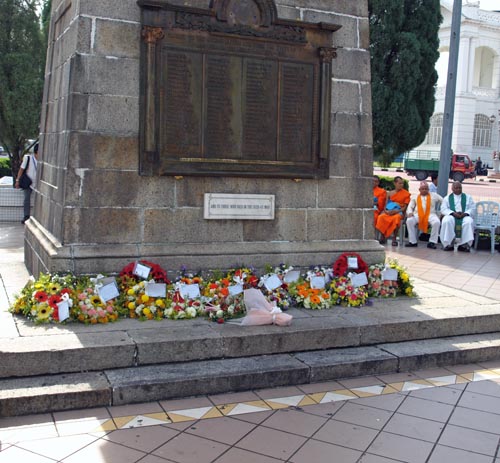
The many wreaths are placed below the plaque which bares the names of the fallen. The next day, 12th June, began early at Batu Gajah – at God’s Little Acre.
After the service at the Church of the Holy Trinity, a solemn wreath-laying ceremony takes place. This ceremony, at God’s Little Acre, takes place on the 2nd Saturday of June every year (since 1980). The picture shows the British High Commissioner laying his wreath of traditional poppies.
After God’s Little Acre, the ‘journey’ continues to the Gurkha Cemetery in Tambun Road where more than 100 Gurkhas are laid to rest.
Finally, on Sunday (13th June), was the memorial service at the Khalsa Dewan (see picture below).
This ceremony pays particular homage to those Sikhs who lost their lives in the Battle of Kampar.
We thank Tony Tamblyn who, (during the Malayan Emergency) served in the Royal Airforce here) for the pictures.
To those who fought selflessly for us – we are eternally grateful.
May 2010
Days Gone By: Growing Up in Penang
Written by Christine Wu Ramsay (the great granddaughter of Leong Fee), this book gives an account of the Leong Fee family – from the time Leong Fee, a poor Hakka migrant from China, rose from rags to riches; eventually becoming the owner of the famous Tambun Mines in Perak, and Vice-Consul of China in Penang.
The writer also talks about her life, being brought up by her grandparents and cared for by black-and-white amahs. With over a hundred photographs (from her family album), Ramsay recounts the “way of life and philosophy” of the olden days – before she left for Australia.
The book can be bought from: Perak Academy, Areca Books (the Publishers), and also from local book stores.
(ISBN 978-983-42834-6-9)
April 2010
A Motorcar Parade?
This fleet of motorcars were apparently on parade when this picture was taken. It was probably during the 10th Anniversary Celebrations of Ipoh’s Municipality. Leading the parade is a Ford Anglia, followed by a Morris Oxford and a BMC MIni.
Now, YOUR job is to guess the street! If you know more, do let us know too.
March 2010
‘…Mama, don’t I look cute? ‘
This little girl is standing by the famous Sultan Yussuf Fountain. This fountain is at a roundabout; which connects Brewster Road, Tambun Road, Gopeng Road and Hugh Low Street. The fountain was donated by the Turf Club, as part of their attempts to beautify Ipoh. The Turf Club also came up with the Japanese Garden – which is along Tambun Road.
Ipoh’s Airport, 1978
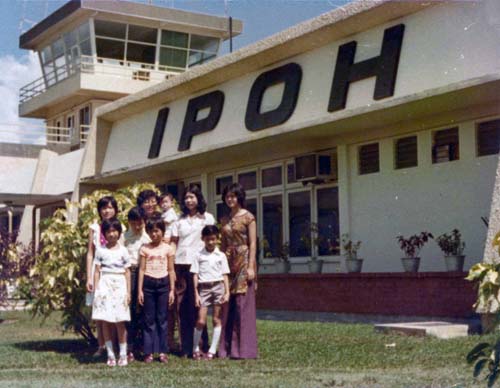 The Ipoh Airport started out as a private airfield in the 1930s. It was only in 1947 that the first commercial flight was introduced. Later, in the 1980s, the airport runway was extended.
The Ipoh Airport started out as a private airfield in the 1930s. It was only in 1947 that the first commercial flight was introduced. Later, in the 1980s, the airport runway was extended.
Here we have a photograph of a family at the Ipoh Airport, taken in 1978. In the background (top, left) is the airport’s control tower. Recently, there were plans to further extend the runway as well as other ideas for a make-over. Anyone out there know what’s the latest news on this?
February 2010
Special Branch Arrest Ave Maria Convent Girl – Where is She Now?
In 1956/57 there was a great deal of student unrest relating to the communist insurgents and the forthcoming Merdeka. Surprisingly, this even spread to laid back old Ipoh. The situation was described by one of the Special Branch officers at the time as “a compelling problem of student subversion developing in the middle schools in Perak, particularly Ipoh”.
The picture shows District Special Branch Officer ASP Peter G. E. Coster taking action against one of the defiant, pro-communist students of Ave Maria Convent Chinese Middle School during a students demonstration at the school. Several girls were taken into custody that day by the uniformed police and Special Branch. This particular young lady does not seem in the least concerned that she is being carted away by such a strong police team. Indeed she walks proudly with head held high.
We wonder where she is now?
January 2010
The Taiping Peace Initiative – 10th Anniversary
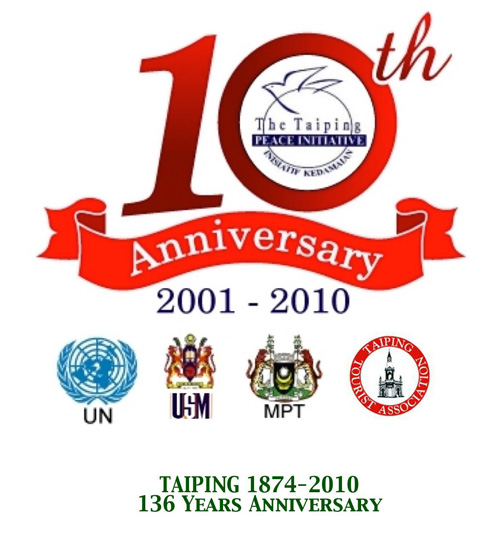 I must confess that until about two weeks ago I had never heard of the Taiping Peace Initiative. I was therefore surprised to be invited to their 10th Aniversary on 20 January 2010.
I must confess that until about two weeks ago I had never heard of the Taiping Peace Initiative. I was therefore surprised to be invited to their 10th Aniversary on 20 January 2010.
I discovered when I attended that the citizens of Taiping, through the United Nations Development programme (UNDP), Universiti Sains Malaysia (USM), Taiping Municipal Council and Taiping Tourist Association, decided that Taiping should contribute to peace and harmony in the country and the world by launching The Taiping Peace Initiative back in 2001.
So they set up the Taiping Peace Initiative, an innovative partnership between civil society, local government and the private sector to promote, through practical action, a holistic concept of a “triple” peace- inner peace, social peace and earth peace.
To this end, part of the Lake Garden, approximately 1.6 acres was transformed into a Peace Park with a peace pole and the words “May Peace Prevail On Earth” in the world’s major languages. Over the 10 years since then much effort has been made to educate people in promoting peace, an activity backed by UNESCO.
This was indeed an eye-opener to me and worthy of more research.
October 2009
Deepavali Greetings

On this auspicious day
We take this opportunity to wish all our Hindu Readers
Happy Diwali
May the forthcoming year
bring light into all your lives
From the staff of ipohWorld.
September 2009
The E W Birch Memorial – a Point of Confusion
At one time Ipoh sported two Birch Memorials, the clock tower in memory of J W W Birch and this beautiful marble fountain in Belfield Street to honour his son E W Birch. These memorials always seem to cause confusion as today only the clock tower remains and more than one tourism site has misled its readers in the past by talking about the “Birch Fountain”, over a picture of the clock tower.
So this post is intended to set the matter straight. The clock tower was erected in 1909 in memory of J W W Birch, the first British Resident of Perak under the Pangkor Treaty of 1874. He was assassinated by the Malays in 1875 and the moving force for the erection of the towere was his son E W Birch who was the 8th British Resident from 1904 to 1910. It is still with us today although as an earlier post shows the area in which it stands is not always treated well.
The photograph above shows the Birch Fountain. This all-marble fountain at the southern end of Belfield Street, was erected by the Ipoh Chinese business community, in honour of E W Birch (later, Sir Ernest Woodford Birch KCMG CMG) who (unlike his father) was a popular administrator that worked closely with the local people, particularly Yau Tet Shin, the original developer of Ipoh New Town.
Sadly, in the name of development, it was demolished by the local council and was replaced by a new fountain of a much lesser qualty and style. That is Ipoh’s loss.


